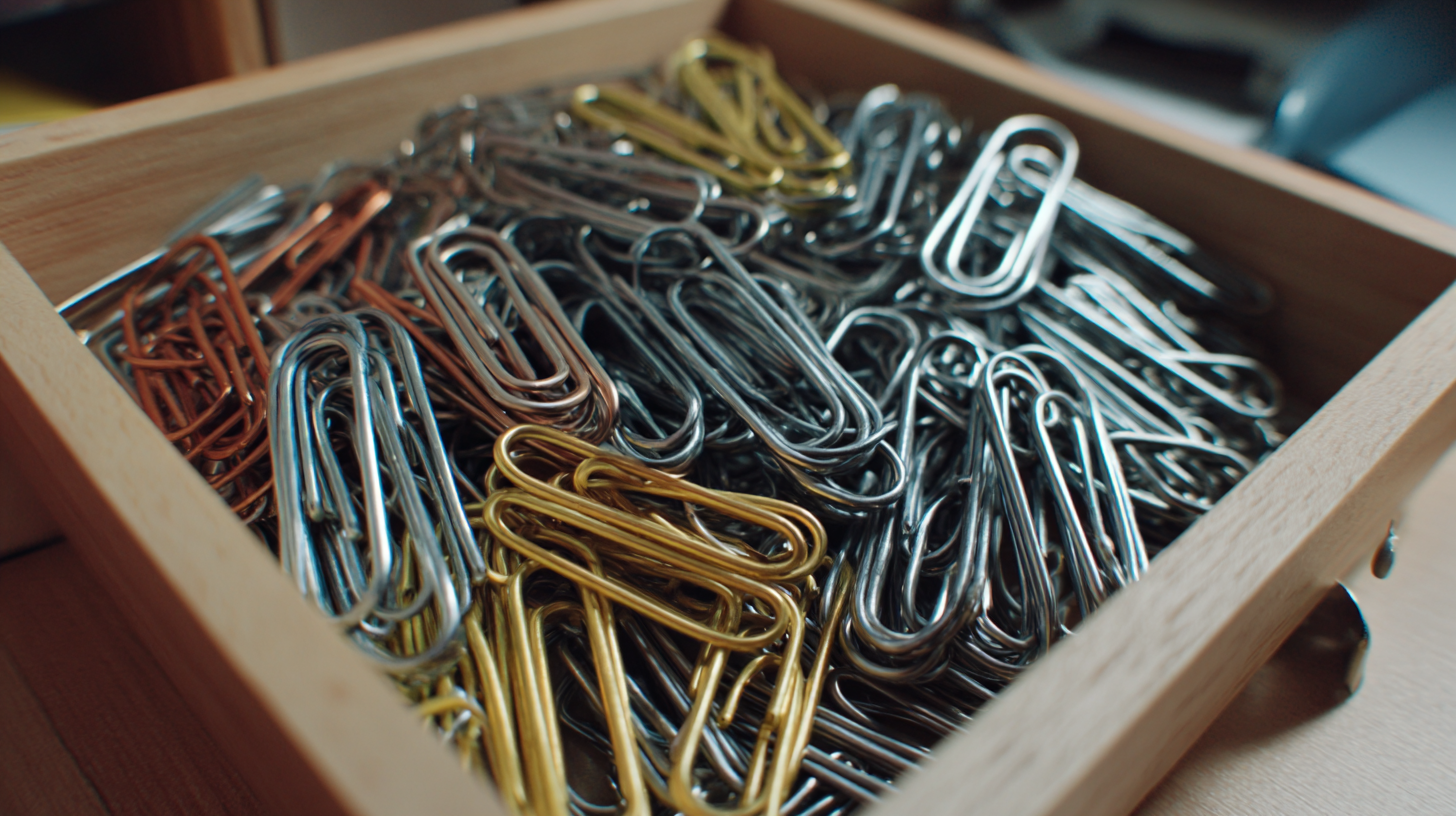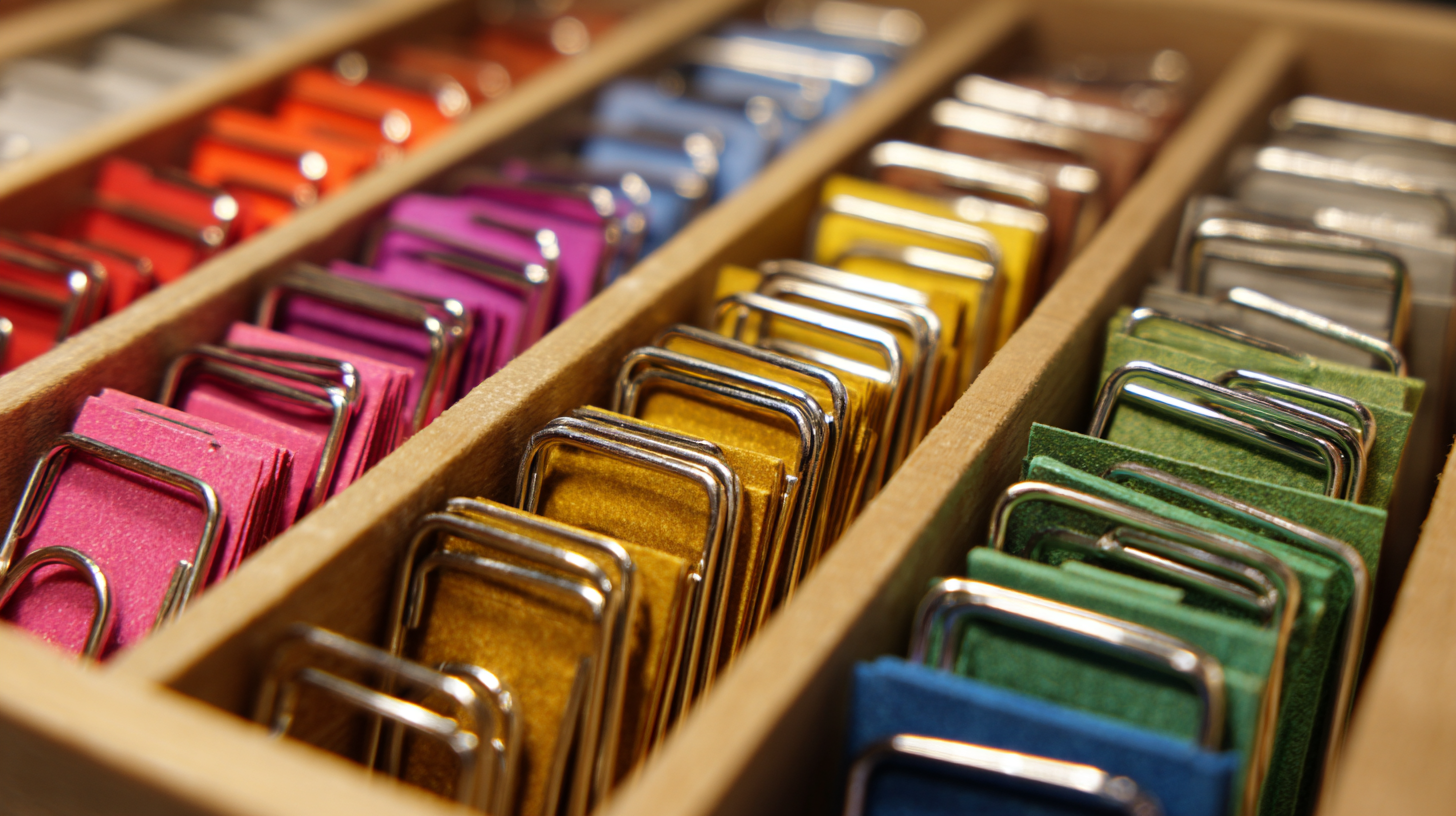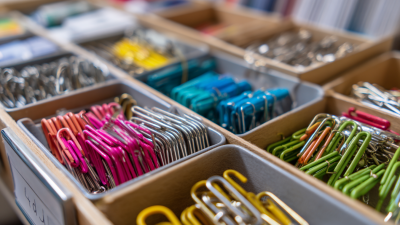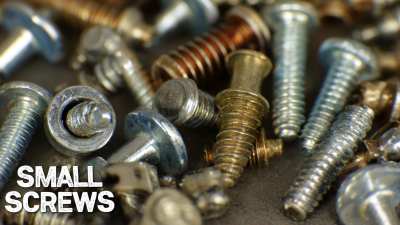In the ever-evolving landscape of office supplies, the role of paper fasteners has become increasingly significant, reflecting both practicality and innovation. According to a recent report by Smithers Pira, the global market for office supplies is projected to reach $40 billion by 2025, with a notable increase in demand for efficient and multifunctional products.

Paper fasteners, which encompass a range of items from staples to binder clips, have adapted to meet the changing needs of the modern workplace. Their versatility not only simplifies document management but also enhances organizational efficiency. As businesses navigate the challenges of remote working and digital transformation, the importance of reliable paper fasteners remains undiminished, highlighting their integral role in maintaining productivity in office environments. This exploration aims to delve deeper into the evolution of paper fasteners, examining their design advancements, varied applications, and the critical importance they hold in contemporary office settings.
The historical development of paper fasteners is a fascinating journey through the evolution of office supplies. Initially, paper fasteners emerged in the late 19th century as a solution to the growing need for organization in the ever-expanding administrative environments. Early versions included simple metal clips and pins that helped keep documents together without damaging them. As offices grew in size and complexity, the demand for more efficient and versatile fastening solutions led to innovations like the stapler and binder clips, which revolutionized document management.
In contemporary office supplies, paper fasteners have significantly evolved, adapting to the changing dynamics of the workplace. Recent industry reports indicate that the global stationery market is projected to grow at a CAGR of 5.4% from 2021 to 2026, reflecting not only the resilience of traditional office supplies but also the introduction of innovative designs and sustainable materials. However, despite this growth, the industry faces challenges; for instance, recent news highlighted the struggle of long-standing stationery manufacturers, particularly as economic pressures intensify due to global factors like the pandemic and geopolitical tensions. This scenario underscores the importance of adaptability in product design and business strategies within the stationery market, particularly for companies focusing on niche items like specialty paper fasteners.
| Year | Type of Paper Fastener | Materials Used | Versatility | Typical Use |
|---|---|---|---|---|
| 1895 | Brass Fasteners | Brass | Limited - Mainly for binding | Document Binding |
| 1920 | Paper Clips | Steel Wire | High - Easily reusable | Holding Pages Together |
| 1950 | Binder Clips | Steel and Plastic | Very High - Holds large stacks | Temporary Document Storage |
| 1980 | Staplers | Metal and Plastic | High - Permanent binding | Binding Multiple Sheets of Paper |
| 2000 | Plastic Fasteners | Plastic | Medium - Adjustable | Organizing Loose Papers |
In today's fast-paced office environment, efficient document management is crucial for productivity and organization. Paper fasteners, often overlooked in the digital age, play a vital role in streamlining this process. According to a 2022 survey by the Office Supply Association, over 65% of office workers still prefer to organize their documents physically, citing the ease of access and reliability of paper systems. Paper fasteners, such as staples, clips, and binders, provide a simple yet effective way to keep related documents together, significantly reducing time spent searching for information.
Moreover, the versatility of paper fasteners extends beyond their basic function. A report from the Document Management Institute indicates that effective document organization can increase overall office productivity by up to 30%. With various types of fasteners available, from eco-friendly options to heavy-duty designs, companies can select tools that not only meet their specific needs but also align with sustainability goals. Using paper fasteners effectively enables organizations to maintain a clear and structured workflow, ensuring that important documents are always readily available for review and reference.
The evolution of paper fasteners has led to a rich variety of options in modern office supplies, reflecting changes in technology and user preferences. Traditional paper fasteners, such as paper clips and staples, have long been relied upon for their simplicity and effectiveness. These solutions offer a straightforward way to keep documents organized, but they also come with limitations, such as the potential for damage to papers and difficulties in disassembly. The ease of use and cost-effectiveness of these traditional methods make them staples in any office environment, yet they may not meet the demands of contemporary workflows that prioritize efficiency and aesthetics.
In contrast, modern paper fastening solutions have emerged to address these limitations. Newer options like binder clips, plastic document holders, and magnetic fasteners provide versatile alternatives that enhance both functionality and presentation. These innovative approaches allow for easy grouping and regrouping of documents without compromising their integrity. Additionally, modern fasteners often incorporate ergonomic designs and colorful aesthetics that appeal to a broader range of users. The comparative analysis of traditional versus modern paper fastening solutions highlights the necessity for offices to adapt to evolving needs while maintaining productivity and organization in an increasingly dynamic work environment.
Paper fasteners have long been a staple in office environments, providing a simple yet effective method for keeping documents organized. However, their versatility extends far beyond traditional uses. In educational settings, for instance, teachers have creatively employed paper fasteners to engage students in hands-on learning. By using them to bind projects or create interactive materials, educators can foster creativity and enhance the learning experience.

In the crafting world, paper fasteners have taken on innovative roles. Crafters utilize them to assemble scrapbooks or homemade cards, allowing for a flexible way to modify designs easily. Moreover, they can be transformed into functional pieces of art, such as unique jewelry or decorative home accents. The potential for creative expression is limitless, showcasing how a simple office supply can inspire artistic endeavors and personal projects outside of its conventional applications.
The demand for sustainable fasteners in modern workplaces is steadily gaining traction, influenced by an overall preference for eco-friendly office supplies. As the office supply market is poised to grow from $183.07 billion in 2025 to $198.98 billion by 2032, reflecting a compound annual growth rate (CAGR) of 1.64%, companies are increasingly mindful of their environmental impact. This shift not only aligns with corporate social responsibility goals but also caters to a growing base of eco-conscious consumers who prioritize sustainability in their purchasing decisions.

Recent industry reports show a notable trend in the fastening and fastening accessories sector. The aerospace fasteners market, estimated at $6.324 billion in 2023, is projected to grow at a CAGR of 6.36% from 2024 to 2031. This burgeoning interest in sustainable materials and processes drives innovation in paper fasteners and other office supplies, facilitating a transition towards sustainable alternatives. As businesses prioritize eco-friendly options, it is crucial for manufacturers to adapt their product offerings to meet this evolving demand and ensure compatibility with increasingly stringent environmental regulations.






